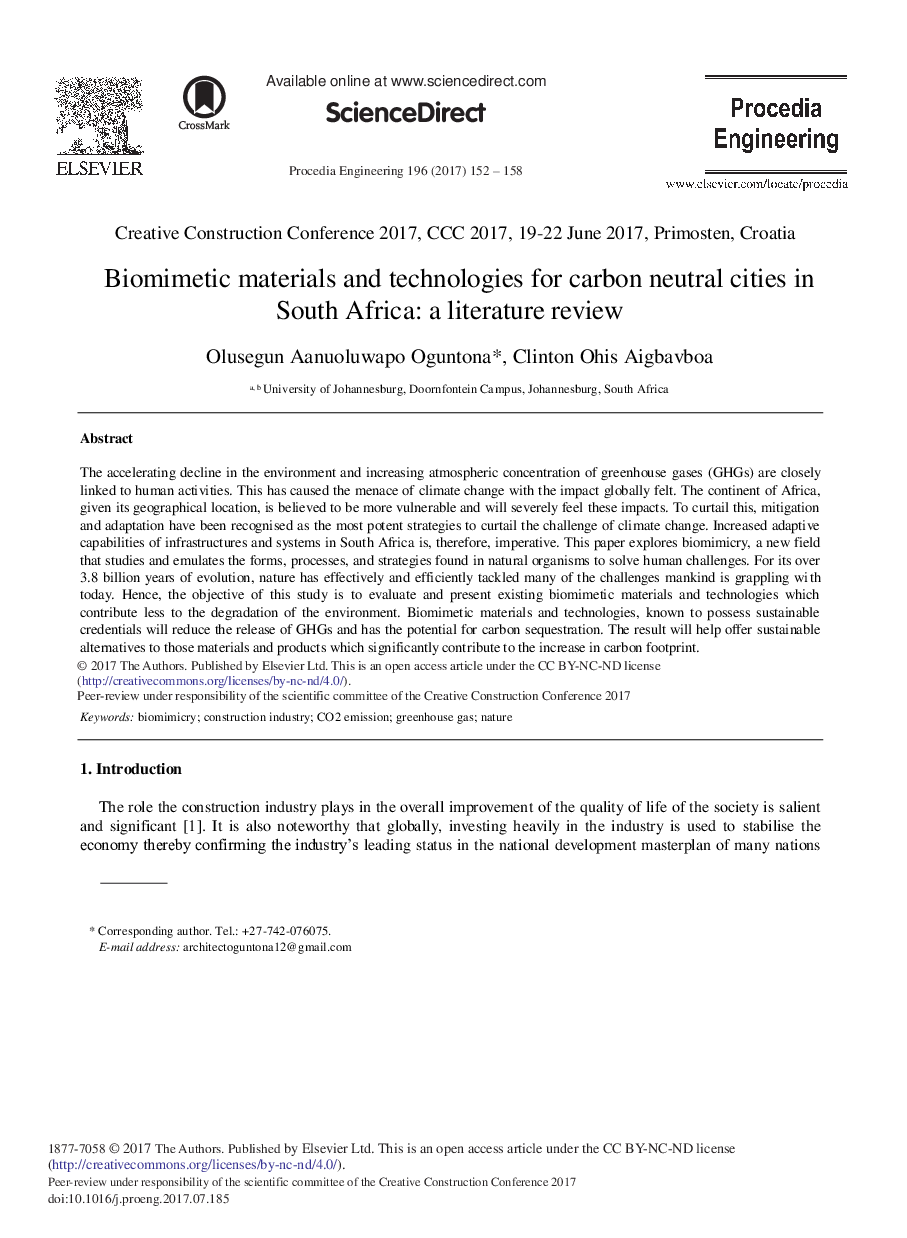| Article ID | Journal | Published Year | Pages | File Type |
|---|---|---|---|---|
| 5026932 | Procedia Engineering | 2017 | 7 Pages |
Abstract
The accelerating decline in the environment and increasing atmospheric concentration of greenhouse gases (GHGs) are closely linked to human activities. This has caused the menace of climate change with the impact globally felt. The continent of Africa, given its geographical location, is believed to be more vulnerable and will severely feel these impacts. To curtail this, mitigation and adaptation have been recognised as the most potent strategies to curtail the challenge of climate change. Increased adaptive capabilities of infrastructures and systems in South Africa is, therefore, imperative. This paper explores biomimicry, a new field that studies and emulates the forms, processes, and strategies found in natural organisms to solve human challenges. For its over 3.8 billion years of evolution, nature has effectively and efficiently tackled many of the challenges mankind is grappling with today. Hence, the objective of this study is to evaluate and present existing biomimetic materials and technologies which contribute less to the degradation of the environment. Biomimetic materials and technologies, known to possess sustainable credentials will reduce the release of GHGs and has the potential for carbon sequestration. The result will help offer sustainable alternatives to those materials and products which significantly contribute to the increase in carbon footprint.
Related Topics
Physical Sciences and Engineering
Engineering
Engineering (General)
Authors
Olusegun Aanuoluwapo Oguntona, Clinton Ohis Aigbavboa,
